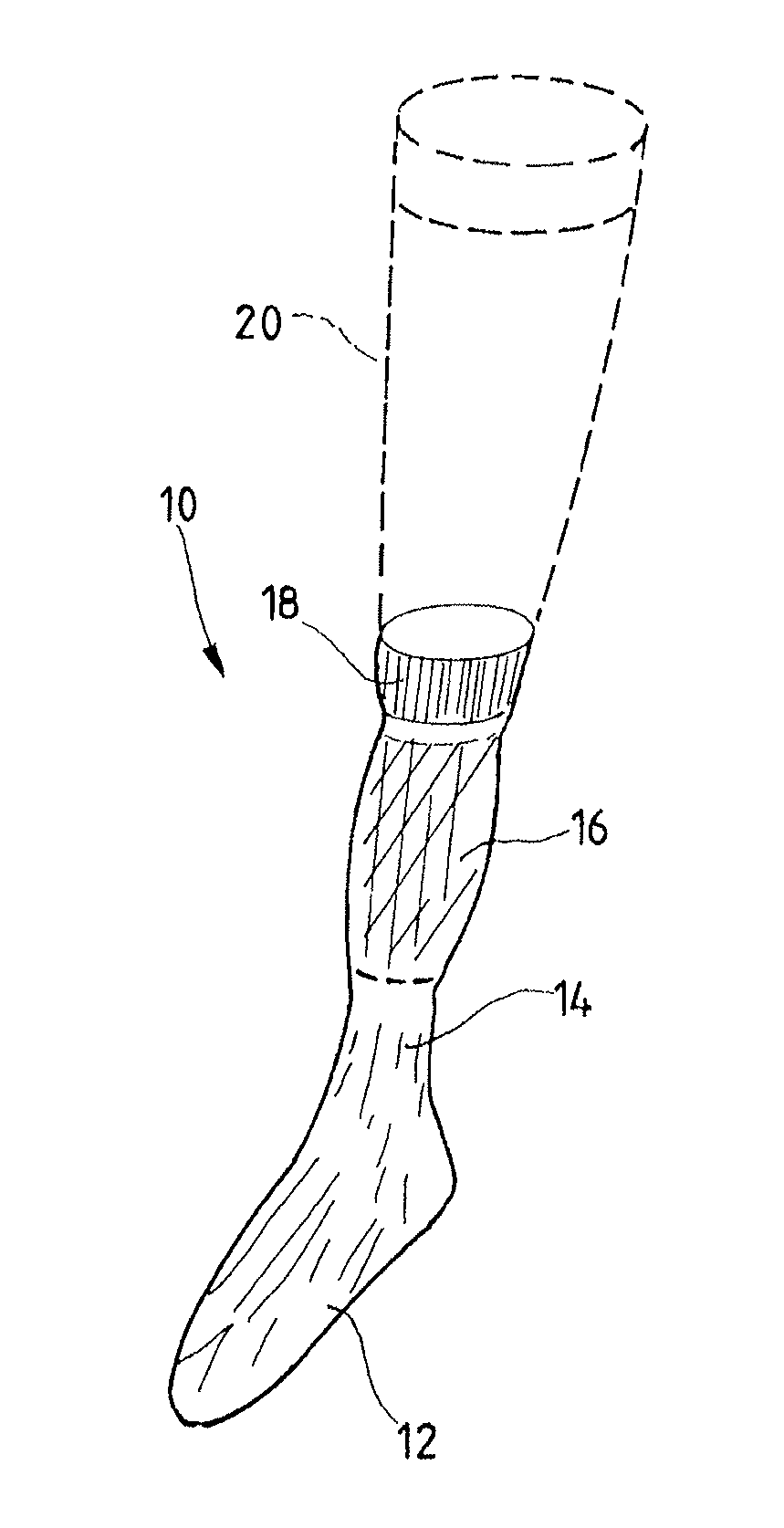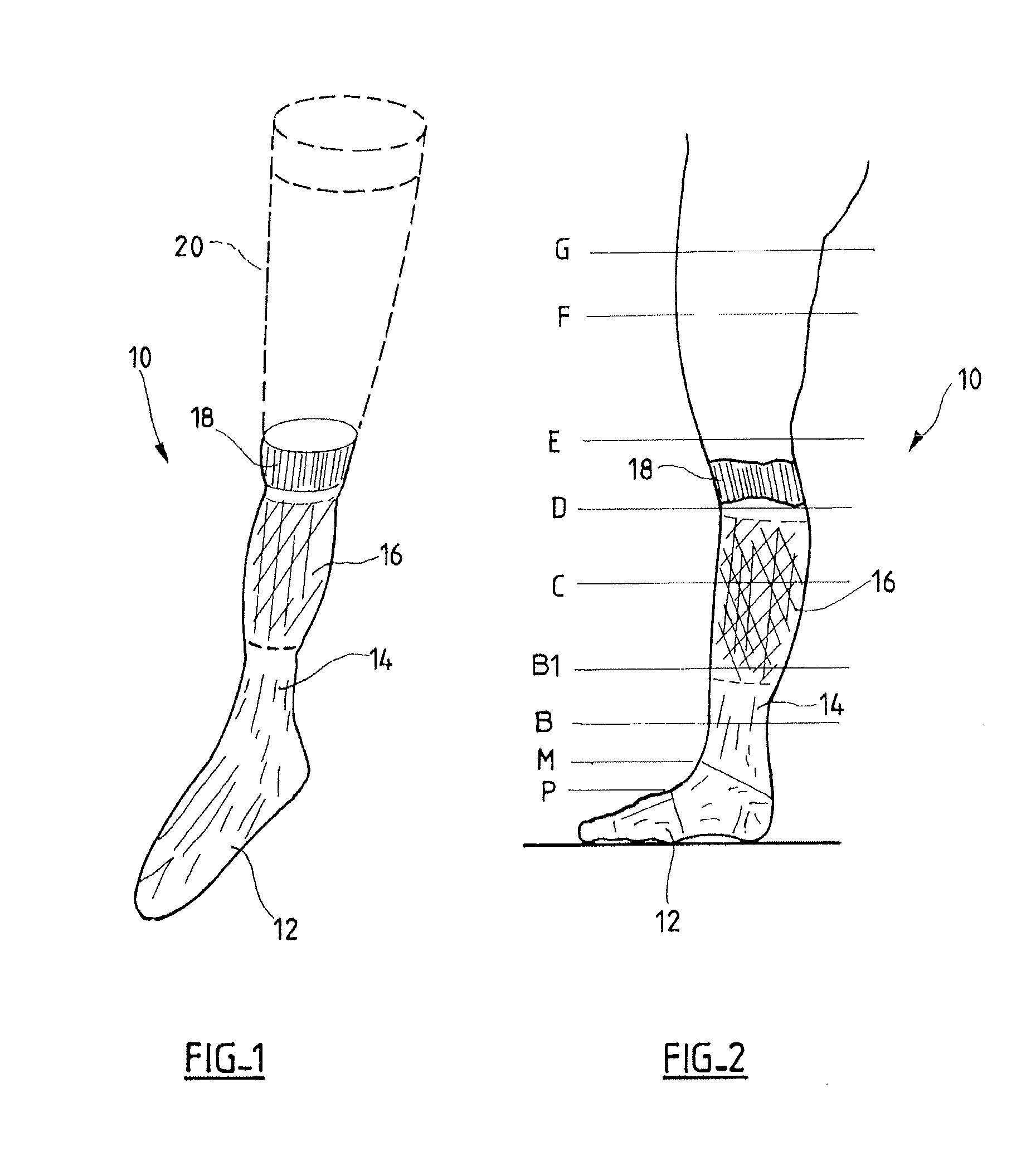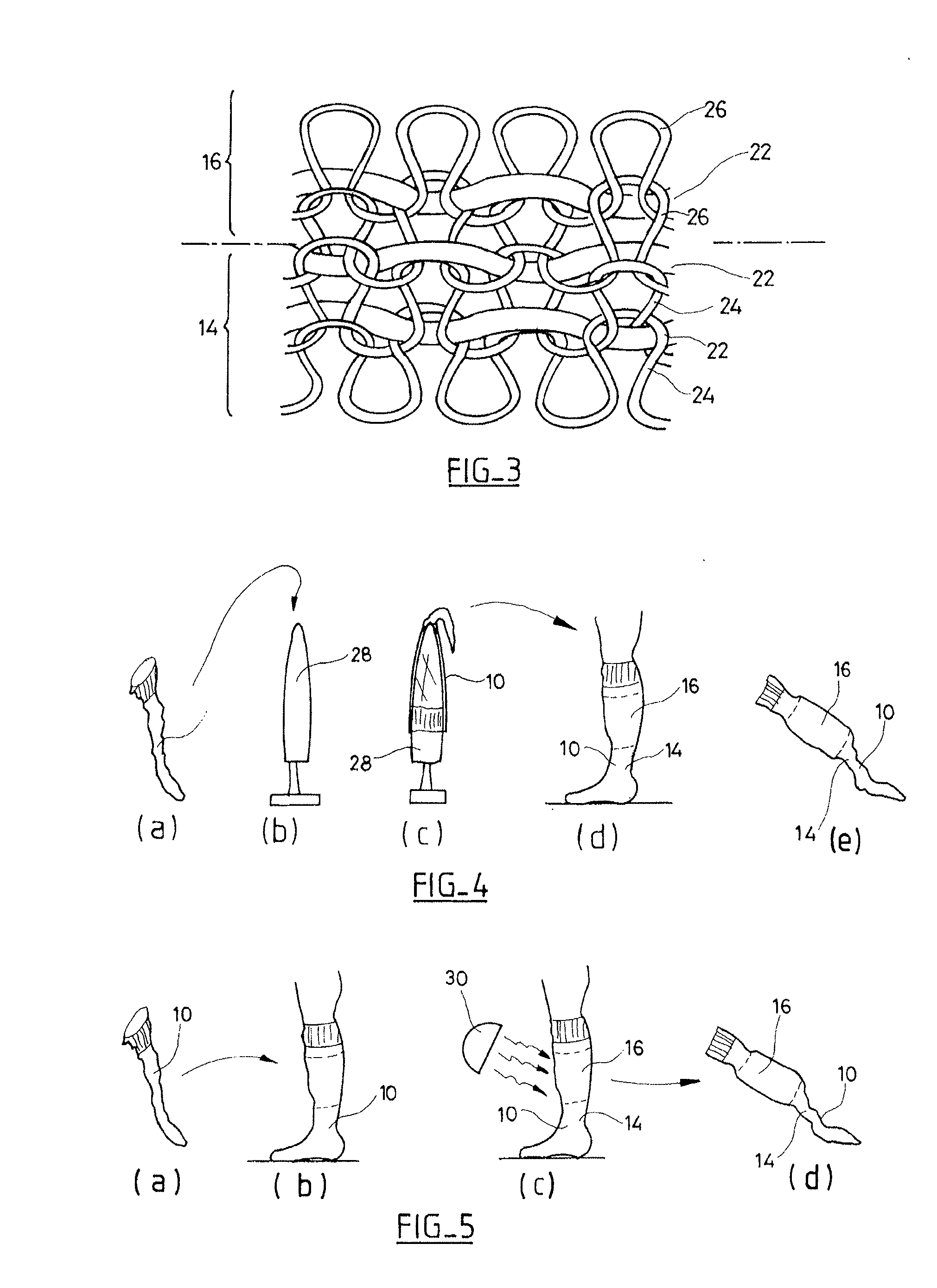Made-to-measure orthosis for compression/containment, for reinforcing the musculo-aponeurotic pump of the calf
a compression/containment and orthosis technology, applied in the field of elastic venous compression (evc) orthoses, can solve the problems of inability to achieve the effect of muscle pump, inability to achieve multi-zone” structures, and inability to fully utilize the effect of venous insufficiency
- Summary
- Abstract
- Description
- Claims
- Application Information
AI Technical Summary
Benefits of technology
Problems solved by technology
Method used
Image
Examples
Embodiment Construction
[0063]In FIGS. 1 and 2, reference 10 is an overall reference for the orthosis of the invention, which is a knitted orthosis made using conventional methods on a circular knitting machine. The orthosis 10 is tubular in shape, comprising a portion 12 that surrounds the foot and a portion of the leg, with a distal portion 14 that surrounds the ankle, and a proximal portion 16 that surrounds the calf. The assembly extends up to a level situated below the knee, when the orthosis is a “knee-high” (or “long”) sock. The orthosis is then terminated by a terminal knitted portion 18 of the ribbed type.
[0064]This sock-shaped configuration is not limiting, and the invention may also be implemented in the form of a thigh-length sock, being extended by a compressive thigh portion 20. The orthosis of the invention may also be implemented in the form of tights, and / or it need not have a foot portion 12 (“footless” type stocking or tights).
[0065]The various adjoining portions of the above-described o...
PUM
| Property | Measurement | Unit |
|---|---|---|
| pressure | aaaaa | aaaaa |
| pressure | aaaaa | aaaaa |
| pressure | aaaaa | aaaaa |
Abstract
Description
Claims
Application Information
 Login to View More
Login to View More - R&D
- Intellectual Property
- Life Sciences
- Materials
- Tech Scout
- Unparalleled Data Quality
- Higher Quality Content
- 60% Fewer Hallucinations
Browse by: Latest US Patents, China's latest patents, Technical Efficacy Thesaurus, Application Domain, Technology Topic, Popular Technical Reports.
© 2025 PatSnap. All rights reserved.Legal|Privacy policy|Modern Slavery Act Transparency Statement|Sitemap|About US| Contact US: help@patsnap.com



